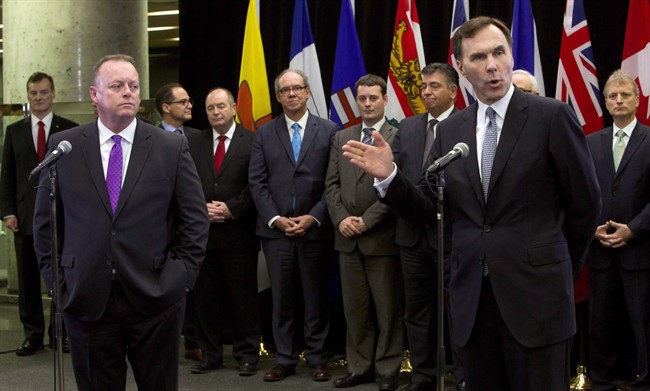OTTAWA – The federal budget watchdog is sounding the alarm about the growing level of net debt being accumulated by Canada’s provinces, territories and local governments.

The parliamentary budget office said Tuesday that the combined net debt of Canada’s so-called subnational governments — currently at 32.5 per cent of GDP — is projected to rise to more than 200 per cent over the next 75 years.
READ MORE: Debt binge has left Canadians more ‘vulnerable’ to economic shock: PBO
At that level, debt service payments would reach 11 per cent of gross domestic product, the report warned.
The subnational outlook, which excludes the federal government, has worsened since last year due to increased spending projections for health care and public sector administration, the analysis said.
On the federal side, the office found the sustainability of Ottawa’s fiscal outlook had deteriorated compared to 12 months ago. It does, however, expect the federal net debt to remain manageable and to be eliminated in 50 years.
Ottawa’s outlook, the report added, has declined due to weak economic growth and temporary spending measures, such as the Liberal government’s decision to move old age security eligibility back to 65 years old, from 67.
The new government has also reduced federal fiscal room through changes to child benefits and its commitment to increase infrastructure spending, the document said.
But overall, the analysis said the combined fiscal path of the country’s federal, provincial, territorial, local and aboriginal governments — as well as their public pension plans — was unsustainable.
“The total government sector in Canada … is not fiscally sustainable without permanent increases in revenues or reductions in program spending,” the document said.
The office said some combination of higher federal transfers, spending cuts and boosts to government revenue would be necessary to improve the subnational outlook.
READ MORE: Liberals promised to empower budget watchdog, haven’t responded to his budget request
During last year’s election campaign, the federal Liberals vowed to balance the books by 2019-20 and to lower the country’s net debt-to-GDP ratio in each year of their mandate to 27 per cent, from 31.2 per cent in 2015-16.
The ratio, also known as the debt burden, represents a government’s capacity to pay back debt.
The Liberals’ March budget, however, did not specify when Ottawa would eliminate the deficits and only projected the net debt-to-GDP ratio to start falling after the next election in 2020-21 — and only to 30.9 per cent.
With the federal net debt-to-GDP ratio on track to decrease over time, the office’s report Tuesday said Ottawa has some fiscal wiggle room to cut taxes or increase spending.
The Liberals’ spring budget projected Ottawa to add $113.2 billion in red ink over the next five years, due in large part to increased spending in numerous areas, such as post-secondary education, infrastructure, the recently unemployed, veterans and seniors.
- Trudeau says ‘good luck’ to Saskatchewan premier in carbon price spat
- Canadians more likely to eat food past best-before date. What are the risks?
- Hundreds mourn 16-year-old Halifax homicide victim: ‘The youth are feeling it’
- On the ‘frontline’: Toronto-area residents hiring security firms to fight auto theft



Comments